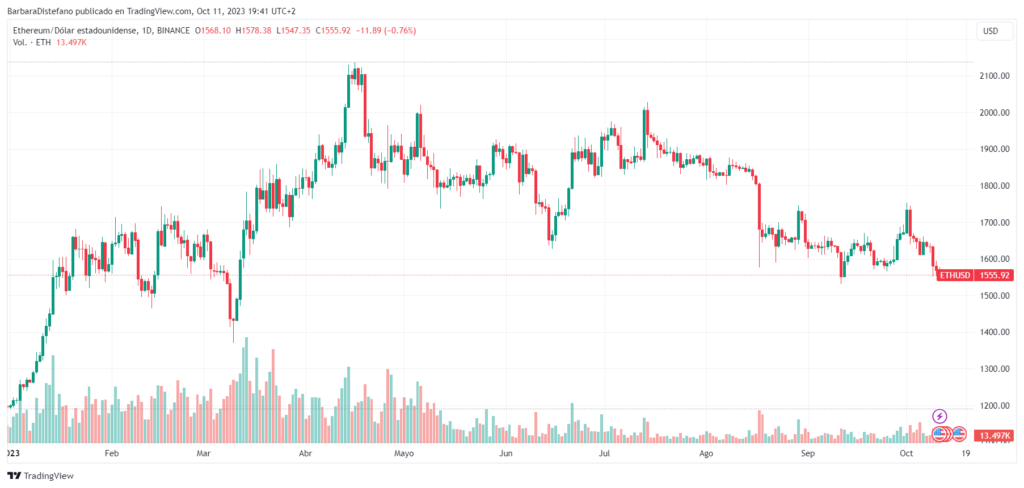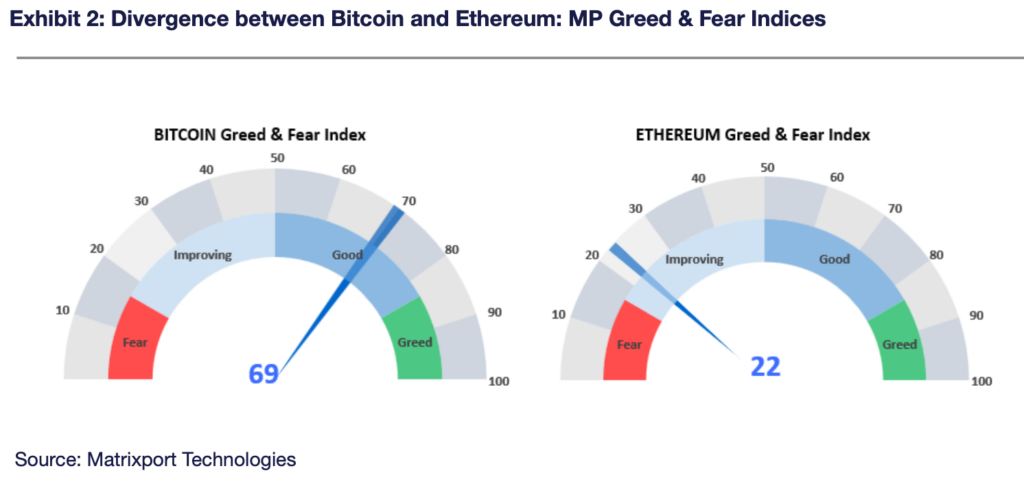Matrixport, a company that offers investments and financial services using crypto assets, stated in its latest market report published on October 10 that the Ethereum cryptocurrency Ether (ETH) is no longer ““Ultrasound money”what is known in Spanish as ultra-hard, very strong or, in the truest sense of the word, ultrasonic money.
The company detailed that “Ethereum has experienced increased issuance (68,000 ETH) in the last 30 days compared to its destruction (38,000 ETH), meaning it is no longer “ultrasonic” money and is considered inflationary.”
The term Ultrasound money is used as a meme by Ethereum enthusiasts along with the bat symbol to say that ETH is better money than Bitcoin (BTC), which has been cataloged in the ecosystem as sound money.
Exactly the concept of sound money It refers to a solid asset that is resistant to inflation. In the case of Bitcoin, this is partly because the emission is limited and halves every about four years.
In this it differs from fiat money (national currencies such as the US dollar), which can be printed indefinitely and creates inflation when its output increases more than demand.
On the other hand, Ethereum currently has an ETH burning system. For each transaction made, part of the commission is used for the work of the validator nodes, and another part is burned. When network activity is high, combustion exceeds emissions. If this is not the case (as is currently the case), Issuance exceeds burning and ETH becomes inflationary.
However, Matrixport noted that Ethereum’s annual inflation rate remains relatively low (0.3%), in contrast to that of Bitcoin (1.6%) and some “real world” currencies (which is around 3.7%) ).
Matrixport advises caution in the Ethereum market
According to Matrixport, not only is Ethereum no longer an ultrasound money, but its current market “also points to a negative outlook.”
He notes that the current BTC price is around $26,700, above the 50-day moving average (MA) of $26,575, “indicating an uptrend.” In contrast, ETH is trading at $1,500, below the 50-day MA of $1,636, “reflecting a bearish trend.”
This happens during ETH is currently trading at its lowest level since March, as shown in the graphic. On the other hand, BTC recorded a recovery last month from its low during this period at $25,000. And so far this year they have seen a 30% and 65% increase in value, respectively.

Additionally, Ethereum’s dominance in the cryptocurrency market has fallen from 18.4% to 17.7% since the merger. Meanwhile, Bitcoin is up over 50%, its highest level since April 2021.
Matrixport claims that weak fundamentals and the lack of news regarding Ethereum’s EIP-4844 upgrade have raised concerns about possible further price declines. “These ongoing concerns have led to a more cautious stance towards Ether, in contrast to the optimistic outlook for Bitcoin,” he emphasized.
The launch of the first futures-based Ether exchange-traded funds (ETFs) in the United States last week sent ETH prices briefly higher. However, he claims that these have not received significant market interest as these types of assets typically underperform the currency. He clarified that Bitcoin futures ETFs have returned 20% lower than the currency this year.
In any case, he noted that the futures funding rate is positive for both the Bitcoin market (3.8%) and Ethereum (5.5%), indicating that investors are investing to the upside. This requires an “optimistic mood,” he says.
According to its index of Greed and fear (Greed and Fear), which is based on data that has not been shared, it is observed that the sentiment in the Bitcoin market is positive while this is not the case for Ethereum.
Given this panorama, the following applies to Matrixport: recommends “exercise caution” as ETH is at risk of price declines. However, as CriptoNoticias reports, others see this scenario as an opportunity to accumulate the currency and capture long-term profits when the bull market returns.

Ethereum is no longer the leading network in commission income
Matrixport, in turn, emphasized this Ethereum is no longer a leading network in the cryptocurrency ecosystem when it comes to generating fee income.
In the last 30 days, the Tron network generated $87.4 million in fees and $65.8 million in token incentives, resulting in a net profit of $21.6 million. Ethereum, on the other hand, generated $82.2 million in fees but offered $82.9 million in token incentives, resulting in losses of $20.6 million.
Other platforms including Lido Finance ($46.9 million), Friend-Tech ($30 million), Bitcoin ($27 million), Uniswap ($23 million), Aave (8.8 million US dollars) and BNB Chain (8 million US dollars), They surpassed Ethereum in generating commissions.
Additionally, the company concluded that Ethereum’s Total Value Lock (TVL) fell between 3% and 5% across the board, with the exception of JustLend, where it rose 0.2% in the last week.